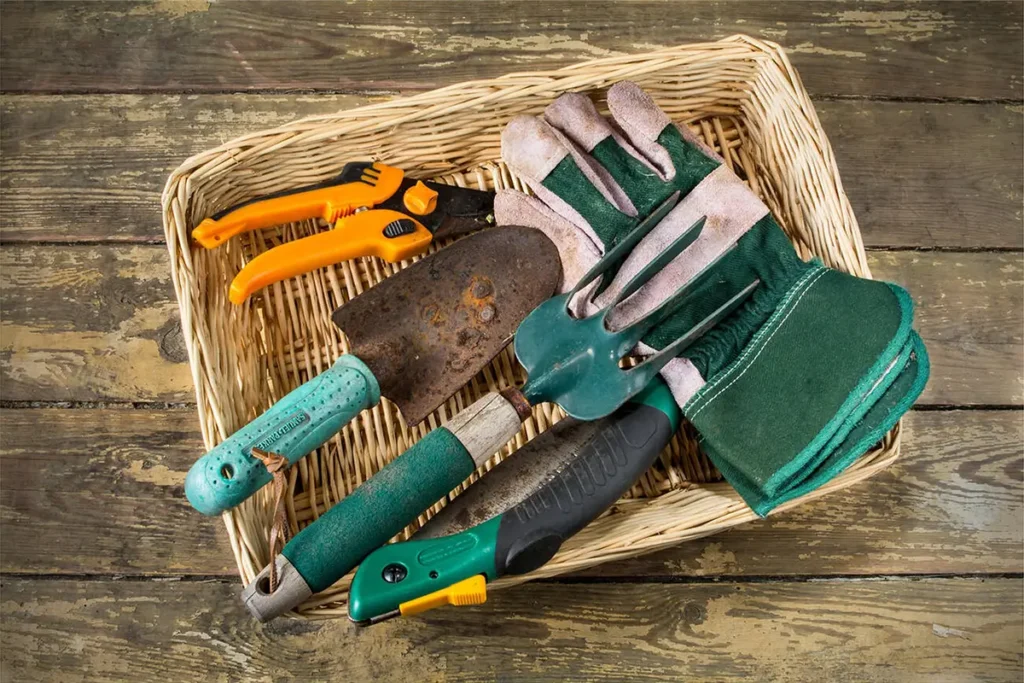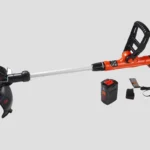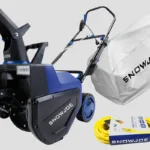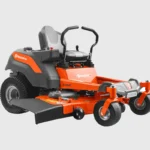Maintaining your garden tools isn’t just about keeping them looking good; it’s crucial for ensuring they last longer, work better, and keep you safe while snipping, chopping, and digging. Think of it as an investment in your garden’s future—and your own!

Basic Cleaning
Every gardener’s toolkit should include a stiff brush and some soapy water. Why? Because cleaning your tools after each use wards off rust, keeps soil diseases at bay, and extends the life of your beloved gear.
Start by knocking off any dried mud with a wooden stick or brush. Then, dip a rag in soapy water and give each tool a good wipe down. For stubborn gunk, a metal scraper can work wonders—just be gentle on those edges!
Deep Cleaning Session
Set aside time for a thorough cleaning at least twice a year. This involves more than just a scrub; it’s about getting down to the nitty-gritty. Mix up a DIY rust remover using vinegar and baking soda, slather it on the rusty spots, and after a few hours, scrub the mixture off. You’ll be amazed at how your tools shine!
For those with a bit more rust, fine steel wool or a wire brush might be necessary, but always follow up with a rinse and dry thoroughly to prevent new rust from forming.
Sharpening Your Tools
Sharp tools not only make your gardening chores easier but also promote healthier plants by making clean cuts that heal faster. Different tools require different sharpening methods. Pruners and shears do well with a simple whetstone or sharpening file. Just follow the original angle of the edge, use smooth strokes, and finish up with a few drops of oil to prevent rust. Shovels and hoes might need a grinder or a file to get back in shape. Safety first—wear gloves and eye protection!
Proper Storage Solutions
Good storage is like a good home—it keeps your tools safe, sound, and ready for the next day’s work. Hang your tools up off the ground to prevent them from sitting in moisture, which can lead to rust.
For smaller tools, a simple bucket or toolbox will do, but ensure they’re dry before tossing them in. Creative DIY storage ideas include using an old pallet or a repurposed shoe organizer. Remember, a tidy shed means a happy gardener!
Seasonal Maintenance
Like bears hibernate for winter, your garden tools need a bit of prep to take a season-long snooze. Before winter, give everything a good clean and sharpening, then oil the metal surfaces to ward off rust. Come spring, a quick check to ensure everything is still sharp and rust-free will set you up right for a new season of gardening. Adjust this routine as needed based on your climate and tool usage patterns.
Handling and Usage Tips
Treat your tools well, and they’ll return the favor. Use tools as intended: no using pruners as hammers! Such misuse not only damages your tools but also can lead to accidents. Keep your movements fluid and natural to avoid stress on the tools—and yourself. Regular checks for loose handles or worn parts can prevent breakage in the middle of a task, saving you time and money.
Repairing Common Issues
Loose handles? A splintered rake? No need to run to the store just yet. Tighten up screws and bolts regularly, and consider replacing worn handles with new ones from your local hardware store. If a tool head becomes wobbly, a shim made from an old garden hose can make it snug again. These small fixes can extend the life of your tools dramatically.
Professional Maintenance and When to Seek It
Sometimes, a tool needs the expert touch, especially when it comes to complex fixes like a malfunctioning power tool. Local hardware stores often offer sharpening services and more extensive repairs that can breathe new life into your favorite tools. Comparing the cost of repair versus replacement can help you decide when to invest in new gear.
Keeping your garden tools in shape isn’t just about utility—it’s about pride in your gardening. By following these guidelines, you’ll ensure your tools can handle every task you throw at them, season after season.

Matthew Dowell
Matthew, a seasoned builder from a family of craftsmen, leads Tools Trove. His passion for tools and decades of hands-on experience fuel his commitment to providing expert reviews and insightful content. Whether you’re a pro or a DIY enthusiast, Matthew’s guidance ensures informed decisions in the world of tools.




